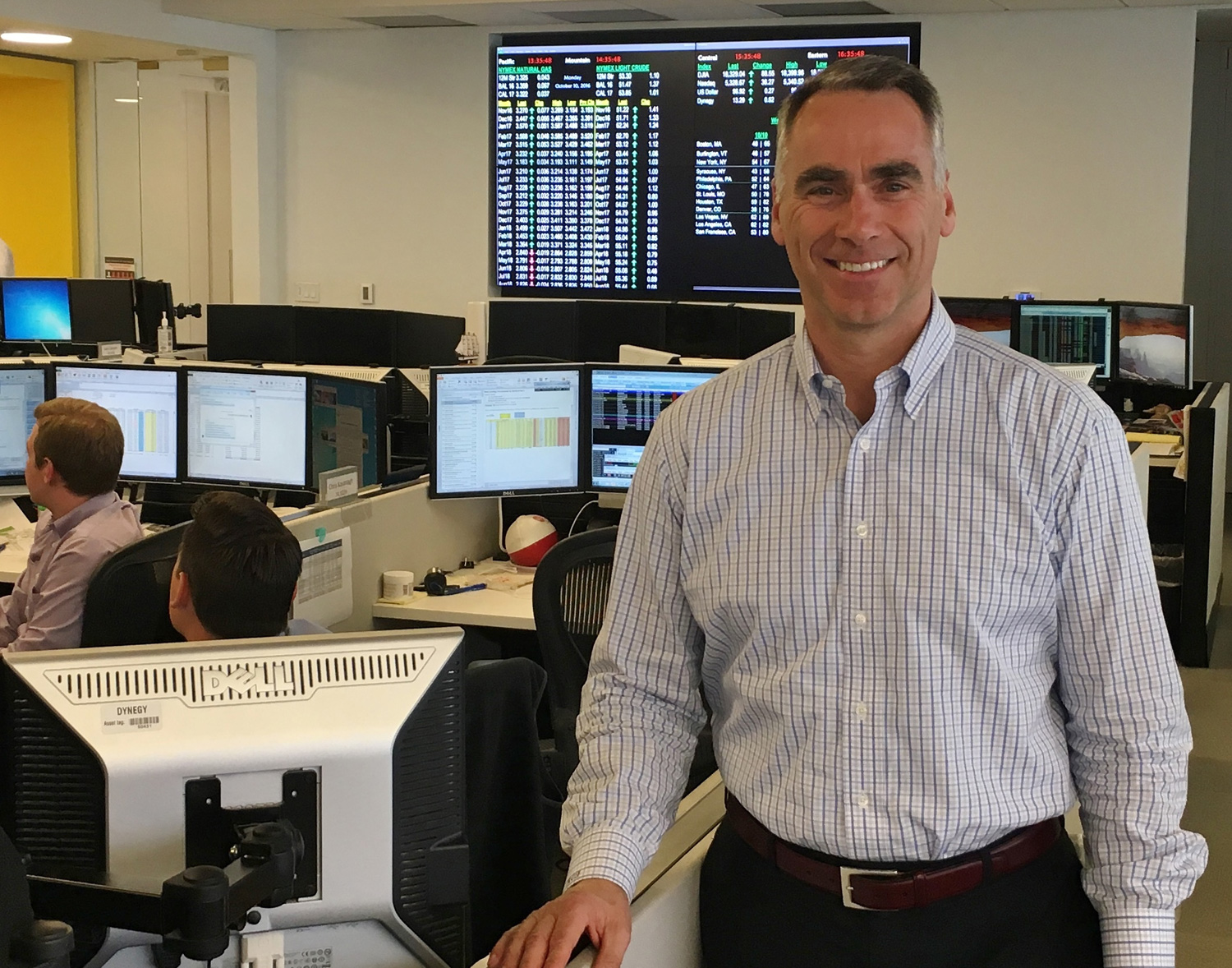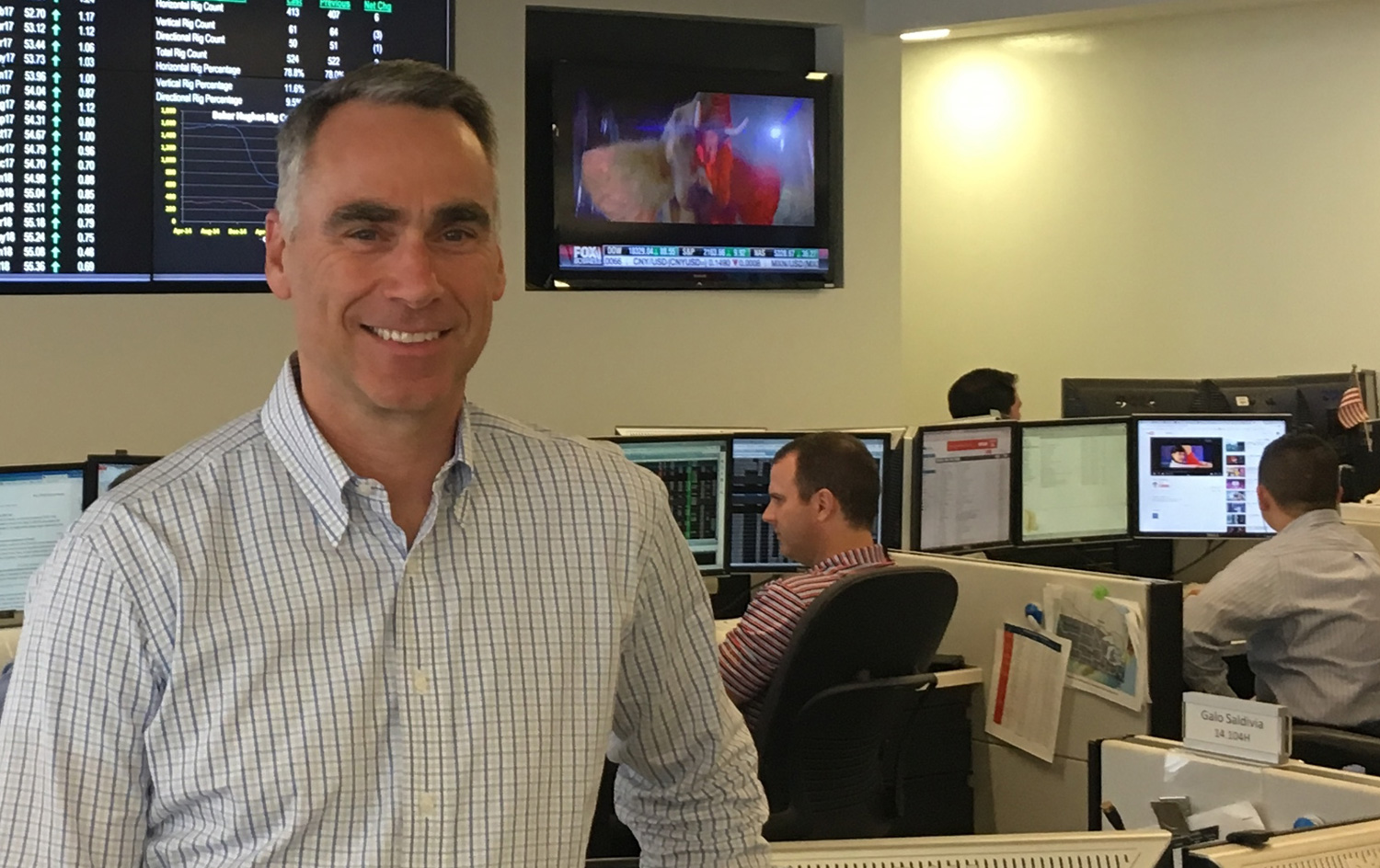Five-Year Anniversary Conversation with Dynegy CEO Bob Flexon
Tom Linquist is a partner at a leading global executive search firm. He is an expert on executive assessment and leadership development, and can be reached at Linquist@LeadershipLyceum.com.

Everything in nature is resurrection. – Voltaire
A Fortune 1000 company, Dynegy is the second largest independent generator of electricity in the U.S. It operates twenty-six thousand megawatts of power generating facilities in eight states. This past June, Bob Flexon celebrated a remarkable five years as CEO of Dynegy.
He joined Dynegy in June of 2011 and within his first year led the company through orderly bankruptcy proceedings. Prior to the end of year two, Dynegy acquired the power generation assets of Ameren in St. Louis for nine hundred million dollars.
Early in Flexon’s fourth year, Dynegy completed the simultaneous acquisition of Duke’s Midwest power generation assets for 2.8 billion dollars, and EquiPower Resources for 3.45 billion dollars. It doubled Dynegy’s net power generating capacity.
During his fifth year, Dynegy announced the acquisition of French company ENGIE’s North American fossil portfolio. This was done through a joint venture with Energy Capital Partners, a private equity group.
This transaction continues Dynegy’s transformation into a predominately gas generation fleet. It will increase net generating capacity another fifty percent to nearly thirty-five thousand megawatts. That’s enough power capacity to supply about twenty-eight million homes.
The complexity and drama of each of these major events in Dynegy’s reformation are worth another article in their own right. But this is not a story about the impressive execution of transactions. Rather, it’s a glimpse into how a CEO in our industry has successfully addressed the biggest challenges in any organization: the environment, culture and people.
Flexon joined Dynegy during a highly distressed period for the company. The financial situation required urgent action. “Dynegy went through a really tough time prior to my arrival,” he reflects.
“The entire executive management team resigned, the board of directors resigned, and there were two failed takeovers. Anybody who could was leaving the company, or about to leave the company, thought that there was probably a bankruptcy four or five months down the road – which there ultimately was.”
From the start, Flexon outlined and communicated a straightforward set of objectives. “I wanted to work through the tough beginnings of the restructuring,” he recalls, “to be accepted by the broader organization, to build a place where people want to come to work and where they’re proud of what they do. And maybe, most of all, to provide the chance for Dynegy to feel what it’s like to win again.”
He determined that the situation required the trust and familiarity of a seasoned team. “The first thing that I did coming out of the gate was ensure that we had an experienced team that could hit the ground running,” Flexon explains. “I brought a half a dozen or so people that I’d worked with in the past. Virtually all of them were at NRG at the time.”
“Being surrounded by some very talented, team-oriented folks made our entrée here into Dynegy that much easier, and set us up for a better chance of success than if I had come by myself.”
Flexon anticipated the consequences that such a radical staff change would entail. “In a distressed environment, people are worried about their future and their careers,” he recounts. “And when you had all these strangers coming in carrying NRG passports, you could easily see an insiders-versus-outsiders situation developing. We worked hard to develop trust with the existing Dynegy employees, and it took time.”
There are parallels that can be drawn between the impact of major life events on us as individuals and the impact of business events on an organization. We can all imagine the impact of major life events such as job change, divorce, a home move, the death of a loved one, or a major illness on our stress levels.
We can also imagine major business events having a similar impact on stress levels in employees of an organization. These events produce a collective and magnified effect on the organization as a whole.
Flexon’s awareness of the impact of the distress and his early focus on getting the team and culture well-established helped the organization in a number of beneficial areas. One area included the ability to better deal with stresses and challenges.
With the team selected and in place, he focused on the chemistry and the culture of the organization. “When the team got here we knew that the restructuring here was about the financial restructuring, the organizational restructuring, but most important of all, the cultural restructuring,” explains Flexon. “Kevin Howell, who came in as our COO at Dynegy and had worked with me at NRG, had experience with the management consulting firm Senn Delaney when he was at Dominion. Kevin brought the experience to NRG.”
While culture can be an ethereal concept, Flexon found solid footing for establishing and sustaining culture through this approach, which “brings tools and methods that will give us the opportunity to shape the culture, as we say, rather than the culture shaping you.”
“You participate in active listening. Active listening, not being judgmental, but listening to understand and listening to exchange viewpoints. Providing coaching and feedback is important,” according to Flexon.
In referring to the key ‘shadow of the leader’ concept, Flexon explains, “It means that we all cast a shadow and that’s what shapes an organization’s culture. The CEO really influences an organization by the tone that’s set. If you’re visible and you’re leading with the values of the company, your employees feel comfortable with you.”
Culture shaping begins with defining individual purpose and then organizational purpose. “It makes you focus first and foremost on yourself and your behaviors and your actions, because that’s what’s going to start driving the culture,” Flexon says.
He goes on to describe his management team’s purpose and areas of focus. “We want to focus on communication, involvement, and visibility. We don’t have individual offices. It’s just one big, wide-open floor,” Flexon proudly describes.
“It’s important for us to sit with our groups and to be visible on the floor walking around and engaging with people. It’s about making sure they realize that we appreciate what they do, and that what they’re doing creates value. We actually demonstrate concern and care for their careers and being part of the team.”
“It’s really important for us to be visible in the plants,” he continues. “In so many locations you hear that they’ve never seen a CEO, or a CEO hasn’t been here since the 1990s. So you get out to the people in the plants, you talk to them.
I think the most important trait for a CEO, particularly when they’re in front of employees, is really just to be realistic, honest, and open, particularly in tough times.”
Tracing culture to business results and vice versa is more art than science, and the lack of a concrete numerical link can be a barrier for some companies in launching a focused culture program. Nevertheless, there are clear signs of the effectiveness of the program in Dynegy’s experience, as well as some unforeseen fringe benefits.
“The first acquisition that we did with Ameren,” Flexon says, “we were in the conference room meeting with the Ameren team, and on the walls you see the posters about curiosity, shadow of the leader, honesty, integrity.”
He continues, “So when we acquired the Ameren assets, we were not the best financial offer for them, but it was important to Ameren CEO Tom Voss to have the assets go to an organization that shared similar cultural values and principles. It brought our two organizations that much closer together, that much faster, because we have a lot of shared values about how an organization should work together.”
“Agility is one of our values. And when you think about what we did, doing two acquisitions simultaneously, announcing in August of 2014, that doubled our enterprise value. We had to raise the financing in the debt markets and the equity markets.
“The ability to do simultaneous due diligence, simultaneous closings, when the counterparties of each didn’t know about the other, was important. And in the case of Energy Capital Partners, we were competing against them on the Duke Midwest assets.”
Dynegy competed with Energy Capital Partners to purchase the Duke assets, bought EquiPower from ECP, and partnered with ECP on the purchase of the ENGIE assets.
“I’d say one of the proudest days that we’ve had here is when the Houston Chronicle, after we announced the dual acquisitions in August of 2014, ran the lead story on the business page that Dynegy was ‘back among the power elite.’ And for our organization to see someone from the outside referring to us that way, it’s like, things are different, and that just feeds the culture and feeds the enthusiasm.”
“I’ve always said, since I came to Dynegy, it’s one team, it’s one goal, and we want to be the best independent power producer out there. There isn’t an independent power producer that has done more than we have to transform what we were and what are we becoming. And that’s again, driven by an organization that is enthusiastic, wants to win, and has the right environment to allow people to perform their best.”
Flexon’s experience at Dynegy demonstrates that cultures can be systematically shaped in order to better support business results and to make companies great places to work. His approach to Dynegy’s situation was unique.
During turbulent times, organizations typically respond by implementing new strategies, systems, processes and organizational structures. It is rare for leaders to address the culture and the people that will actually carry out the changes and ultimately achieve success for the company.
Dynegy’s journey over the last five years is a success story. But the challenges of transforming culture in a dynamic business environment are never over.
To hear the full interview, please visit the podcast Leadership Lyceum: A CEO’s Virtual Mentor at Apple iTunes, or stream the audio here:
Hear Part 1
Hear Part 2
Category (Actual):
